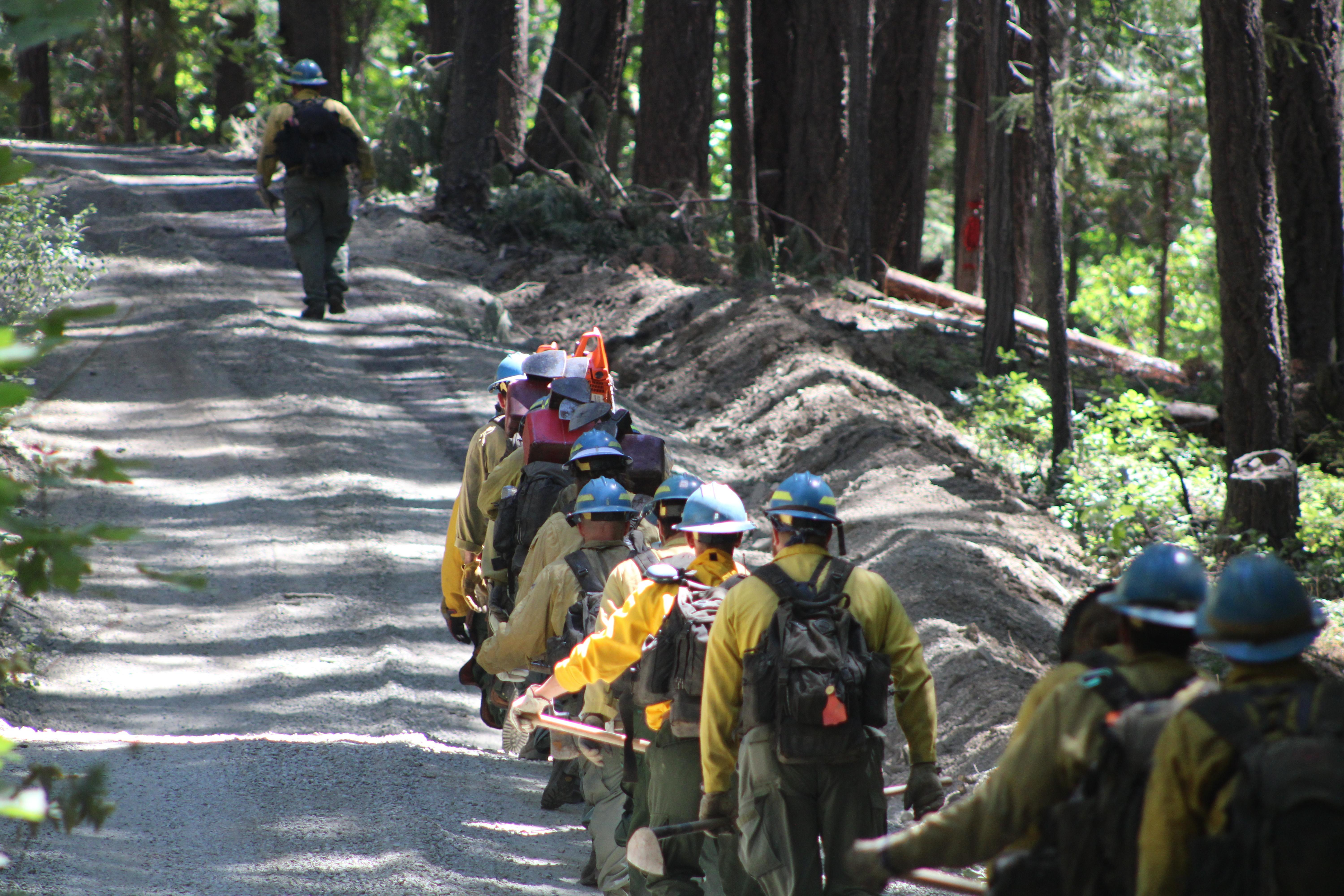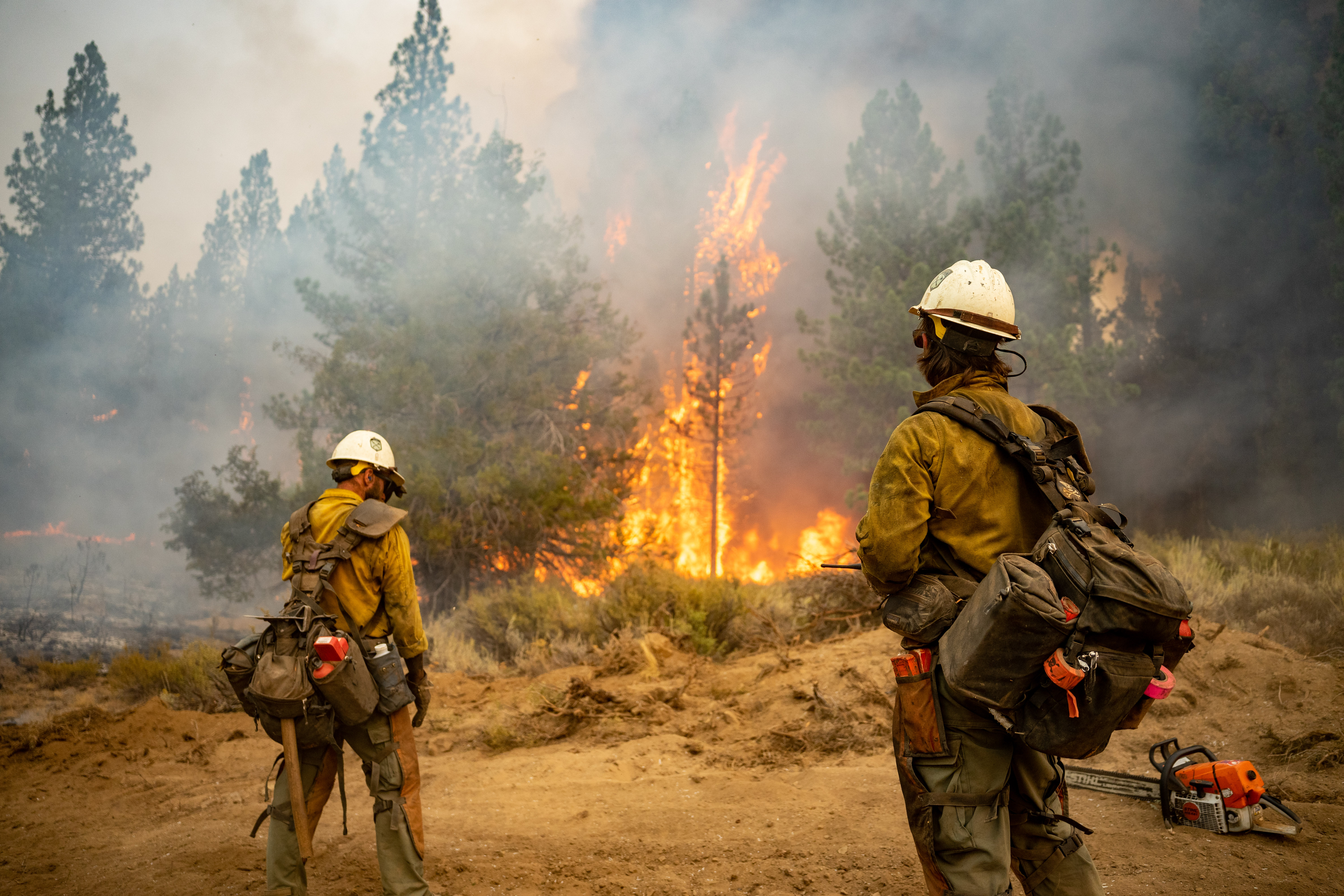From facing the frontline of a wildfire to navigating through difficult terrain, wildland firefighting is a complex job with many challenges, and battling the fire is only one part. Heat stress is one of the greatest obstacles wildland firefighters face. Through prevention practices, protective gear, and the obvious, hydration, wildland firefighters can help prevent heat stress on the line.
PRE-SEASON PREVENTION PRACTICES
Preseason preparations like fitness training and acclimatization to the heat can significantly reduce the likelihood of heat stress during fire season.
Maintaining a high level of cardiovascular fitness is essential in reducing the risks associated with heat stress. A strong cardiovascular system allows firefighters to efficiently regulate their body temperature through effective circulation and heat release mechanisms, such as sweating. According to The National Wildfire Coordinating Group, wildland firefighters in good physical shape work with a lower heart rate and body temperature because they can sweat sooner. This allows them to adapt to heat twice as quickly as someone who is not fit.
Alongside maintaining fitness levels, acclimating to high temperatures is another crucial method to mitigate heat stress. Acclimatizing to heat involves gradually exposing oneself to hot environments over time, allowing the body to adjust and become more efficient at managing high temperatures. According to The United States Forest Service, after 5 to 10 days of heat exposure, the body begins to sweat at a lower temperature, sweat production increases, blood distribution improves, and the heart rate decreases allowing the skin and body temperatures to lower.

LAYERS OF PROTECTION
Designed to help manage heat stress, wildland clothing allows heat to escape while simultaneously providing insulation from external heat. Features such as permanent moisture management and vented designs help improve airflow and comfort. The balance between protection and breathability allows wildland firefighters to stay safe on the line while also maintaining a high level of comfort.
Protection and comfort doesn't stop at the outer layer. FR-underclothing adds another protective layer that's not only fire-resistant but also provides permanent moisture management. With breathable underlayers that allow airflow and moisture control, wildland firefighters can keep their internal temperature cool on the line.

HYDRATION
Though obvious, staying hydrated is one of the most important ways to help minimize heat stress, as emphasized by The United States Department of Agriculture Forest Service. According to their guidelines, wildland firefighters require 4 to 6 liters daily to maintain hydration levels. By prioritizing hydration before, during, and after their shifts, wildland firefighters not only reduce the risk of heat stress but can also sustain focus on their duties, allowing them to respond effectively in the field.

KNOW YOUR LIMITS
While these practices are crucial in minimizing heat stress on the fireline, it's also important to be aware of and responsive to the body's signals. Wildland firefighters should pay attention to early signs of heat stress, such as fatigue, dizziness, or increased heart rate, and address them quickly. By recognizing one's limitations and avoiding pushing past safe limits, wildland firefighters can effectively mitigate heat stress while optimizing their safety and performance levels.
CHALLENGES BEYOND THE FLAMES
Wildland firefighters face many challenges beyond battling the flames, with heat stress being one of the most significant obstacles. Through prevention practices, being equipped with the right protective clothing, staying hydrated, and acknowledging personal limits on the job, wildland firefighters can reduce the risk of heat stress and stay safe on the line.
PREPARING FOR WILDFIRE SEASON WITH NFFC
SHOP CLOTHING, PPE, FIRE EQUIPMENT, TOOLS, SKID UNITS, AND MORE HERE!
National Fire Fighter helps provide wildland firefighters with the products they need to protect themselves, their communities, and their property from the devastating effects of fire. NFFC is a trusted source for quality, reliable firefighting gear to help effectively extinguish fires, stay protected, and minimize injury. With innovative designs, and high-quality, durable materials, NFFC wildland fire equipment and products help keep the brave men and women fighting fires safe when things get hot.